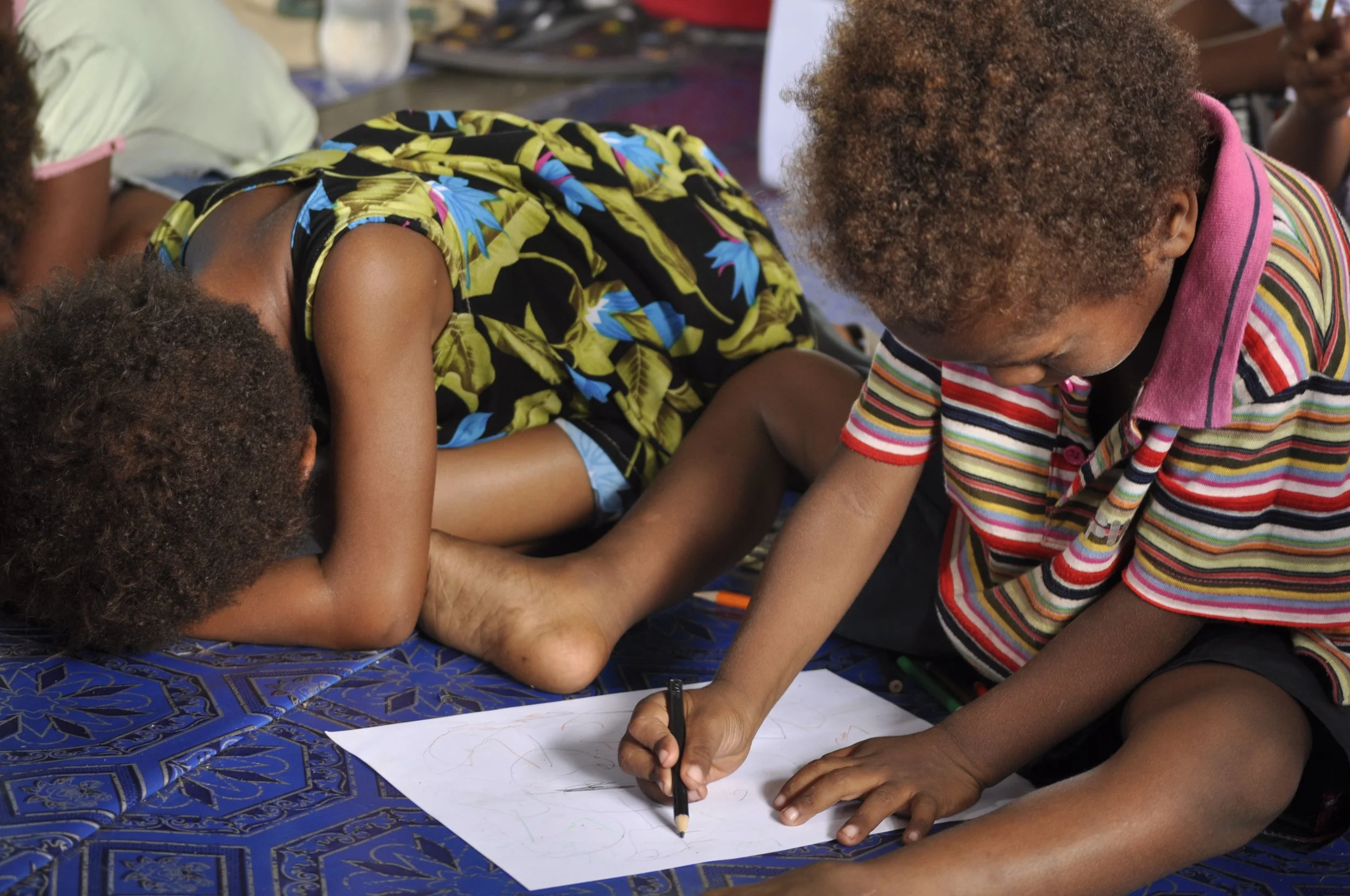Ples Bilong Pilai
The Tok Pisin for playground literally translates to Place belonging to Play or ples bilong pilai. Master Class 2012 was an intensive one week project in which the Papua New Guinea architecture students designed and built a playground for the local preschool and campus children. Eight teams of students (~90 students in total) each built one piece of 'play equipment. The project was planned and led by Chris Dobunaba and Molly Felde.
Play is the highest form of research.
~Albert Einstein
While the project was far from perfect, the real goals and accomplishments - learning on site, team-building, leadership, working to real deadlines and real budgets, building for others and learning from failure - those were ultimately the things that mattered.
The Brief:
Design + Build
Designs were conceptualized, developed into buildable structures and constructed at full-scale.
- Real-world experiences
- Challenging leadership opportunities
- Building in order to think
Creative Learning
The design methodology focused on the idea that play is the one of the best methods for teaching and learning. At the University level the concept of 'play' is used in the sense that building at any scale is practice and that the typology of a play ground allows for broad experimentation and creative designs, while still having to address technical and budgetary challenges.
- challenges pre-conceived notion that learning happens within the floor walls of the classroom
- Explores unique ways for students to practice design
- Develops an appreciation for real-world aspects of construction thru physical hands-on projects
- students will have real limitations - deadlines, site constrictions, budgets, etc. to sustain a high level of creativity
- connects play & learning in local communities
Community Engagement
Participation in the local community was an important element to ensuring continued development towards a more positive environment.
- Creates an opportunity for students to add value to their local community by creating a place for kids to learn & play
- Affords learning opportunities for students, staff & the local community working towards a common goal
- Creates opportunities to share knowledge
- Brings local awareness to the importance of creative education
Sustainability
Efforts were focused on three aspects of sustainability:
- Environmental - through local, recycled and environmentally friendly materials
- Social - promotes students to work with communities & the passing of knowledge creates a sustainable method of educating
- Cultural - considers traditional places and methods of play in Melanesian societies, and considers local craft in the construction methods.
Men should learn to live with the same seriousness with which children play.
~Nietzsche
Play + Learning:
Students were asked to come up with designs that:
- provided a variety of experiences
- encouraged the imagination of the users.
- learning fun learning opportunities
- allowed for exploration
- engaged and intrigued users
- buildable within the constraints (time, budget, materials)
Community Consultation






























Design + Build
































































































Results:














































































Challenges and Thoughts
The main challenges were money and budget, and aren't those typically the challenges on any project? One could look at the end results and judge them on their many faults. Looking back, I see many things I would have changed. But the students worked hard, often well past midnight, and learned more on this in one week than they would have in the classroom. Nor have I ever done more multi-tasking at anyone moment or been more proud of my students. More importantly, they had fun, and the kids who played, played for all they are worth.






































